Martha Roby: Dismantling the regulatory regime

Throughout the eight long years of the Obama Administration, Alabamians suffered under an overly-empowered regulatory state that burdened hardworking men and women and their businesses with countless harmful federal regulations. This type of overreach was seen across the many federal agencies, but perhaps none more blatantly than the Environmental Protection Agency (EPA). I am very pleased that over the last year and a half, our unified Republican government has worked to dismantle this Obama-era regulatory regime. I am glad to report that important progress has been made recently, as the Trump Administration’s EPA announced it intends to replace the Obama Administration’s Clean Power Plan with President Donald Trump’s Affordable Clean Energy (ACE) rule. This is great news that represents an important step towards returning power to the states and further breaking down the regulatory state. When the Obama Administration first rolled out its so-called “Clean Power Plan,” they touted it as the “single most important step America has ever taken in the fight against global climate change.” What they didn’t say was that despite the significant increase it caused in energy bills, the “Clean Power Plan” actually didn’t do much to alter the impact of future climate change. Under this plan, the EPA implemented stringent regulations that limited carbon dioxide emissions from power plants, thus hiking rates and shutting down energy plants – especially in the coal industry. Of course, I think we can all agree that achieving more affordable, reliable, and safe energy is a priority, but adding more regulations and burdensome expenses to Americans are not solutions. That’s why the Trump Administration’s proposed ACE rule is so important. The rule would empower states with the flexibility to determine how best to reduce greenhouse gas emissions while providing modern, reliable, and affordable energy for the American people. This is a far better solution than the Obama Administration’s “one-size-fits-all” approach that treated every state the same. It’s no secret that for eight years, the EPA and other federal agencies went beyond their rightful authority and pushed for unnecessary regulations that negatively impacted our economy, discouraged investment, and stifled job creation here in the United States. These agencies became known for “backdoor legislating” by frequently attempting to circumvent Congress to set policy. I am proud that over the last year and a half, Congress has worked to reverse course by passing several Congressional Review Acts, which is the process of striking rules and regulations left over from previous administrations. These actions, along with the steps taken by the Trump Administration, have already and will continue to unleash our nation’s economy. Among the many challenges we continue to face as a nation, I believe making America energy independent and not reliant on foreign nations must continue to be a priority. While I am pleased that energy exploration methods have improved over the years, we must continue to look for ways to secure America’s energy for future generations. I believe American innovation and our entrepreneurial spirit are the keys to meeting the energy challenges of the 21st Century. President Trump’s proposed ACE plan embraces this outlook and will give Alabama companies certainty to create jobs and prosper as we move forward. ••• Martha Roby represents Alabama’s Second Congressional District. She lives in Montgomery, Alabama, with her husband Riley and their two children.
Daniel Sutter: Forget Paris

President Donald Trump announced the U.S. withdrawal from the Paris Climate Accord last week, setting off a firestorm of criticism. For instance, a New York Daily News headlined: “Trump to World: Drop Dead.” The withdrawal raises questions about global warming policies and their formulation. President Barack Obama and other world leaders signed the Paris Accord in December 2015. The U.S. and other developed nations promised greenhouse gas emissions cuts in the Accord. The Clean Power Plan, which significant restricts the use of coal, counts towards our promised efforts. Peoples’ responses to the withdrawal seem to depend largely on whether they believe that global warming will prove catastrophic. Warming due to greenhouse gases is not really in doubt; relevant questions involve how much warming will occur, the impacts of warming, and the viability of climate engineering to avoid or reverse warming. Despite the invective hurled at President Trump, the Paris Accord would have done very little to prevent catastrophic global warming. If every nation had delivered as promised (a big if), the Accord would have prevented about 0.2 degrees Celsius warming by 2100 according to leading climate models. The math of atmospheric carbon dioxide concentrations is pretty clear: achieving the recommended targets will take a lot more than driving electric cars. Basically, we would need to stop using fossil fuels by mid-century, bringing almost unimaginable changes to our economy and lives. On the other hand, people who don’t see global warming as a dire threat look forward to Mr. Trump soon voiding the Clean Power Plan. Such a celebration might be premature. The Environmental Protection Agency (EPA) might be committed to the Plan despite the Paris exit. Why? In 2007, the U.S. Supreme Court ruled in Massachusetts v. E.P.A. that the Clean Air Act provided legal authority to regulate carbon dioxide emissions, if the EPA determined that greenhouse gases endangered the environment. In 2009, President Obama’s EPA issued this endangerment finding. As Cato Institute’s Patrick Michaels argued at the recent 12th International Conference on Climate Change, the endangerment finding likely compels implementation of the Clean Power Plan. The process behind imposing these policies is, I think, highly troubling. A lawsuit by environmental groups and sympathetic state attorneys general yielded the 2007 Supreme Court decision. Regulatory actions by the EPA produced the endangerment finding and Clean Power Plan. And finally, we had an international agreement never ratified by the Senate. The process further relied on technicalities and a limitation of the Clean Air Act. The Act requires reduction of pollution to safe levels regardless of cost, and without considering whether we might more easily live with pollution. And yet adaption to a warmer climate is a potential response to global warming. The Clean Air Act gives the EPA authority to regulate “any air pollutant” endangering human well-being. Calling carbon dioxide, which is necessary for life, pollution stretches the plain meaning of the word. Limited government undertakes only those tasks citizens authorize. Meaningful limits require narrowly authorized tasks. Air pollution caused by cars and factories differs markedly from global warming. Action to address global warming should require explicit authorization by citizens. The cap-and-trade proposal of 2010 sought such approval, but failed in the Senate. The Paris Accord was never submitted to the Senate. Enacting the costliest environmental program ever contemplated without approval by our elected representatives is inconsistent with democracy and limited government. Global warming activists interpreted cap-and-trade’s failure as evidence of special interests choking the democratic process. Yet evidence weighs against this interpretation. A 2015 Gallup poll, for instance, found that only 32 percent of Americans worried a great deal about climate change, the same percentage as in 1989. If you doubt such polls, then ask if you or people you know would be willing to give up cars, airplanes, air conditioning and computers over global warming. Our system trusts that Americans have the intelligence and character to determine what is in our best interests. Many Americans are not willing to spend trillions of dollars combatting global warming. We may be wrong, but imposing incredibly costly policies against our wishes is un-American. ••• Daniel Sutter is the Charles G. Koch Professor of Economics with the Manuel H. Johnson Center for Political Economy at Troy University and host of Econversations on TrojanVision. The opinions expressed in this column are the author’s and do not necessarily reflect the views of Troy University.
Donald Trump’s vow to bring back coal gives hope to weary regions

The hard-eyed view along the Tug Fork River in West Virginia coal country is that President-elect Donald Trump has something to prove: that he’ll help bring back Appalachian mining, as he promised time and again on the campaign trail. Nobody thinks he can revive it entirely – not economists, not ex-miners, not even those recently called back to work. But for the first time in years, coal towns are seeing a commodity that had grown scarcer than the coal trains that used to rumble through around the clock: hope. Around here that hope is measured. Still, most voters saw Trump as the only choice for president. He vowed to undo looming federal rules and said President Barack Obama had been “ridiculous” to the industry. Trump told miners in Charleston: “We’re going to take care of years of horrible abuse. I guarantee it.” West Virginians went all in, backing Trump and electing a coal mine-owning billionaire, Democrat Jim Justice, as governor. But a lot of people had gone under already. “Lost my home, vehicle, everything,” said Roger Prater. Wearing the miner’s telltale blue pants with reflective strips on the legs, Prater would be heading underground that night. He’d been laid off for 20 months but now benefits from a small hiring surge that started before the election. At 31, Prater said he can get everything back, but he’s uncertain for how long. “In Trump’s term, I feel we’ll do good, but after that who’s to say?” he said. That skepticism is supported by industry analysts, who say any recovery won’t be centered in the eastern coalfields of Kentucky and West Virginia and will never bring U.S. coal back to what it once was. Last year, the nation had about 66,000 coal mining jobs – the lowest since the U.S. Energy Information Administration began counting in 1978. That’s down 20,000 since a high point in 2008, and preliminary data show 10,000 more lost this year. Mines out west stand to gain the most under Trump because of the huge reserves beneath public lands in Wyoming, Montana, Colorado and Utah. At the Wolf Mountain Coal company near Decker, Montana, superintendent Dave Bettcher said he’s been praying Trump can do just that. Wolf Mountain gets coal from the nearby Spring Creek strip mine, where operator Cloud Peak Energy has cut workforce and production. Wolf Mountain’s 20 workers still have jobs, but Bettcher said eight years of anti-coal leadership in Washington have left the industry in peril. “I believe in the guy,” Bettcher said of Trump as a conveyor belt dumped coal into a truck bound for North Dakota. “If he can hold up his end, he’s going to help a lot of people.” In January, the Obama administration – prompted in part by concerns about climate change – imposed a moratorium on new lease sales pending a three-year review of the federal coal program. Trump has vowed to rescind the moratorium, which could open huge coal reserves. Burning them would unleash an estimated 3.4 billion tons of carbon dioxide – equivalent to a year’s worth of emissions from 700 million cars, according to Environmental Protection Agency calculations. But Trump has promised, too, to roll back Obama’s Clean Power Plan, emissions restrictions that would make it more expensive for utilities to use the fuel. Such proposals would “level the playing field for coal,” allowing it to better compete with natural gas and renewable energies, said coal analyst Andy Roberts with the firm Wood Mackenzie. Yet industry executives expect that pressure to reduce carbon dioxide emissions will continue. “It can’t just be, ‘We’re going to get rid of these regulations, and you guys can party until the next administration comes,’” Cloud Peak Energy Vice President Richard Reavey said. “There are serious global concerns about climate emissions. We have to recognize that’s a political reality and work within that framework.” Owners of more than 200 coal plants, almost half the nation’s total, plan to retire the facilities by 2025, said Mary Ann Hitt, director of the Sierra Club’s anti-coal campaign. That trend is unlikely to be reversed, she said, with wind and solar power becoming more cost effective and natural gas offering a cheap alternative. But Hitt said environmentalists would be naive to think they’ve won. “The coal industry is going to have friends in high places,” she said. In West Virginia, Justice reopened four of his mines this month, saying they’ll provide 375 jobs, before being elected governor. They produce metallurgical coal for making steel; its price has risen sharply with lower Chinese production. Justice acknowledged during campaigning that the coal business is tough – mining jobs in the state fell to about 15,000 last year, with 7,000 gone since 2008 – but said he believes it will help power the U.S. economy and West Virginia’s future. “You’re going to see more miners go back to work in West Virginia to some level,” he said. On Saturday, Justice said he and Trump talked for 15 minutes about efforts to put miners back to work. He didn’t disclose specifics. For now, Williamson resembles the small Rust Belt cities of the North after factories closed, leaving empty storefronts and sidewalks. On a recent afternoon, a young man stood on the city bridge over the Tug Fork, which mostly separates southern West Virginia from Kentucky, holding a sign asking for help. Greg Blankenship from Pike County, Kentucky, across the river, lost his $50,000-a-year mining job in 2009 and got a lower-paying county job months later. His father made a good living as a miner and raised three kids. At 44, Blankenship hopes Trump’s election means he’ll be able to go back but says he knows “the president can’t do everything.” He’s right: Trump won’t control the economics of low natural gas prices or slow global growth, two big factors hurting coal demand, said John Deskins, director of the West Virginia University Bureau of Business and Economic Research. Trump will have some control over environmental regulation, but it’s not
Attorney General, coalition of states announce plan to ask federal court to vacate EPA rule
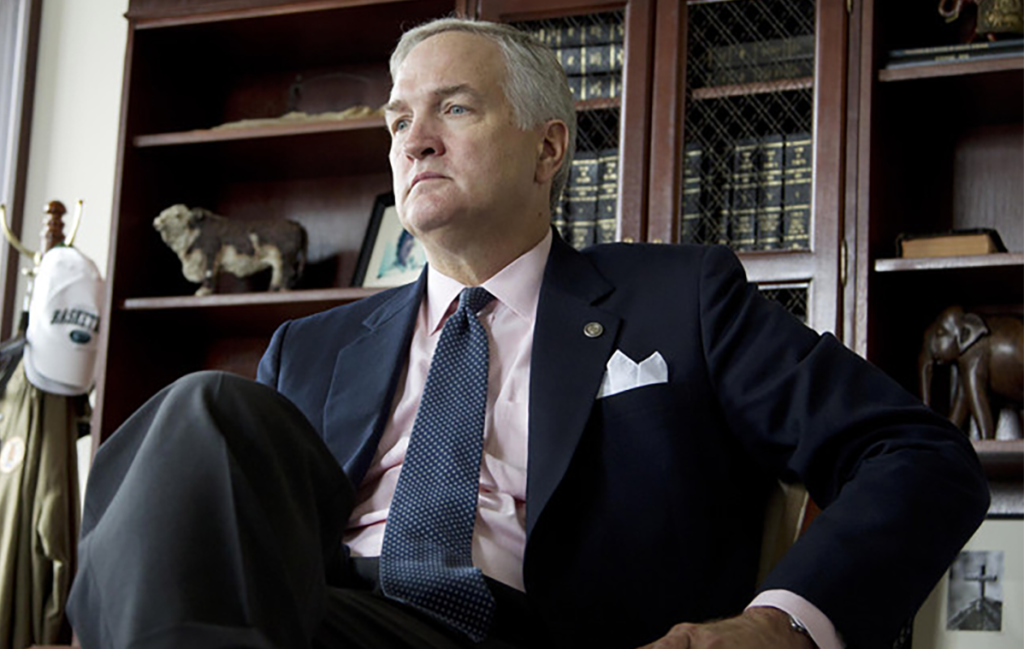
Alabama Attorney General Luther Strange announced over the weekend he would join a group of mostly Republican states to ask a federal court permanently nix Environmental Protection Agency-proposed carbon rules which recently had a setback in the U.S. Supreme Court. The EPA proposal – dubbed the Clean Power Plan – seeks to reduce carbon emissions by reining in or closing many coal-fired power plants that emit carbon pollution. Strange and a coalition of other state attorneys general filed litigation on Friday that would “go ahead and rule against the plan” now that the Supreme Court has issued a stay against it, holding up progress until further review. “Ten days after winning a stay in the United States Supreme Court of President Obama’s so-called Clean Power Plan, Alabama and a majority of U.S. states are asking the U.S. Circuit Court in Washington, D.C. to permanently vacate the Obama administration’s illegal carbon rule, once and for all,” said Strange, who has long opposed the carbon emissions plan. Strange explained his rationale for filing the claim in a statement Sunday afternoon, calling the environmental agency’s proposal a “power grab” by the federal government. “The EPA not only goes too far in seeking to impose arbitrary and overly restrictive limitations on carbon dioxide emissions, but it does so with the goal of changing America’s energy sources. The EPA’s costly carbon rule is little more than a power grab and just the latest in a long list of Obama administration attempts to end-run Congress,” Strange said. The case is now in the hands of the U.S. Court of Appeals for the District of Columbia Circuit, which will issue a ruling on the merits of the case. Oral arguments are set to begin in June after the court reviews the litigation. “Relying on an obscure provision of the Clean Air Act, EPA’s Rule seeks to effect an ‘aggressive transformation’ of the mix of electricity generation in nearly every State by systematically ‘decarbonizing’ power generation and ushering in a new ‘clean energy’ economy,” the case filed Friday reads. “Although Congress has debated a number of bills designed to achieve that very result, it has not yet adopted any such legislation. Frustrated with Congress, EPA now purports to have discovered sweeping authority in Clean Air Act section 111(d)—a provision that has been used only five times in 45 years—to issue a ‘Power Plan’ that forces States to fundamentally reorganize electricity generation throughout the country.” Strange is not alone among Alabama leaders in opposing the plan. U.S. Reps. Martha Roby and Gary Palmer have derided the plan as a job killer that could cause “enormous harm” to the American economy.
Alabama among 28 states calling on US Supreme Court to stay EPA’s clean power plan
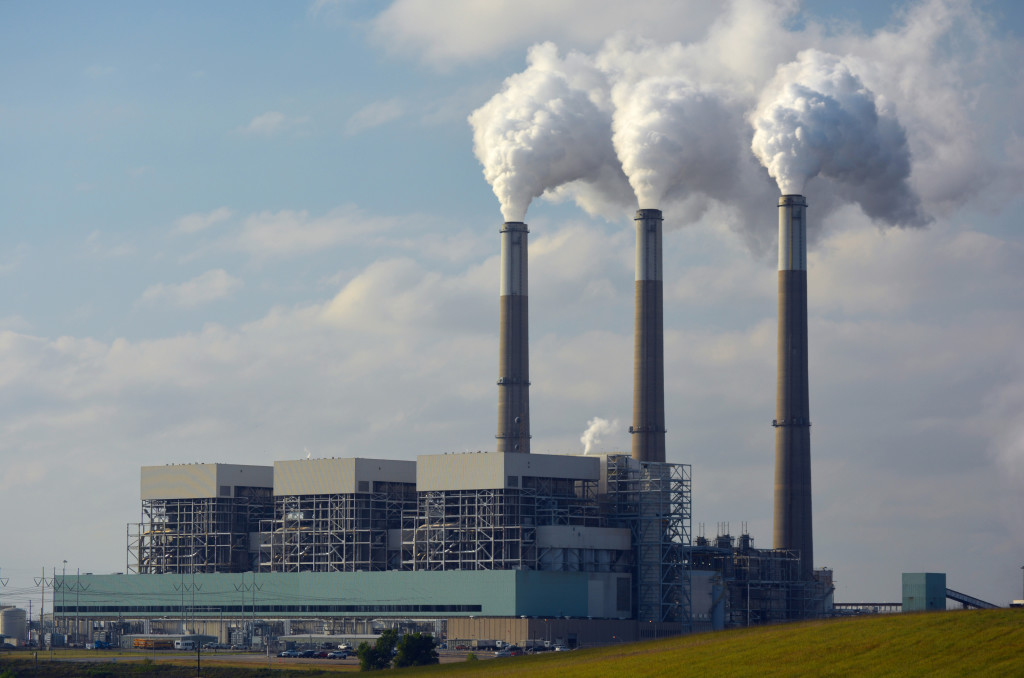
Alabama Attorney General Luther Strange said Tuesday that the state has joined 27 other states to demand the U.S. Supreme Court to stay the Environmental Protection Agency‘s (EPA) Clean Power Plan, according to a news release. The states involved in the petition are a bipartisan conglomerate asking for a halt to the “unlawful and job-killing” plan, which sets a national limit on carbon pollution created by power plants. “Once again, President Obama has attempted to radically expand the power of the federal government by adopting policies through executive action that Congress has refused to enact,” Strange said. “But the scope of President Obama’s job-killing Clean Power Plan is unprecedented. If this new EPA rule is allowed to go into effect, it will shutter coal-fired power plants around the country, resulting in higher electricity costs and fewer jobs. The United States Supreme Court should act to immediately stay this rule until the lower courts can address the serious concerns the states have raised about its legality.” The states involved in the coalition, which challenged the new EPA rule on the day it was published last year, include Alabama, Arizona, Arkansas, Colorado, Florida, Georgia, Indiana, Kansas, Kentucky, Louisiana, Michigan, Mississippi, Missouri, Montana, Nebraska, New Jersey, Ohio, Oklahoma, South Carolina, South Dakota, Texas, Utah, West Virginia, Wisconsin and Wyoming, along with the Mississippi Department of Environmental Quality, Mississippi Public Service Commission, North Carolina Department of Environmental Quality and Oklahoma Department of Environmental Quality. The petition, addressed to SCOTUS Chief Justice John Roberts, claims that “the power plan’s central premise that states may be required to meet emission reductions based on the shifting of electricity generation away from coal-fired and fossil fuel-fired plants is unprecedented and unlawful.” The petition further states that the “EPA’s invasion of the states’ historic powers is unsupported by the required clear statement of congressional intent” and “the power plan unconstitutionally commandeers and coerces states and their officials into carrying out federal energy policy,” among other assertions.
Daniel Sutter: Bad economics produces poor policy

Do you care about the mileage your car gets? Some economists, and the bureaucrats at the Department of Energy (DoE), don’t think so, and use this belief as a basis to restrict the products available on the market. Research examining different energy-related decisions, like the purchase of high mileage cars and energy saving appliances, and insulating and weatherizing homes, provides support for this belief. But the research is largely bad economics, and based on confusion. Engineers and economists use the term energy efficiency very differently. Engineers consider an appliance or machine energy efficient if it uses less energy to perform a task. Economists say we use energy efficiently when we minimize the cost of energy use plus the cost of saving energy. As an economist I think that our definition is more relevant, but let’s consider why. Would you want to buy a car that gets 60 miles per gallon but cost $200,000, or cost only $20,000 but could go only 30 miles per hour? Would you want to buy a clothes dryer that used little electricity but required 2 days to dry a load of clothes? I suspect not. The engineering focus on energy use to the exclusion of other considerations makes for economic nonsense. Many studies purport to find evidence that Americans consumers and businesses fail to buy more expensive products that use less energy and engineers believe would “pay for themselves” in cost savings. This result has become known as the “energy efficiency paradox.” But it is bad economics. Good economics attempts to understand decisions as consumers or businesses do; there are many reasons why people may not to purchase the product using the least amount of energy. This thinking is affecting our lives. The DoE has been aggressively tightening energy efficiency standards authorized by the Energy Policy and Conservation Act of 1975. The DoE in 2015 was in the process of revising 35 standards for residential and commercial products. Each standard limits Americans’ freedom of choice by only allowing products meeting DOE’s definition of efficiency on the market. Global warming policy also exploits the energy efficiency paradox as a cheap way to meet a large part of the greenhouse gas emissions reductions needed to meet the Clean Power Plan’s targets. The cost of meeting the Clean Power Plan’s emissions reductions will greatly exceed estimates if the energy efficiency paradox is not valid. Economist Walter Williams, who will be visiting Troy and the Johnson Center next spring, has often noted that while a thief will take your money and be off, a politician takes your money and then insists on telling you that you are better off as a result. Similarly, the DoE’s cost-benefit analyses claim that we are better off being prevented from buying the refrigerators, air conditioners, and dryers we would otherwise. Do Americans in fact ignore energy costs? When I was growing up, I helped my Dad insulate our house to save on winter heating costs. Millions of Americans bought fuel efficient cars imported from Japan in response to the Energy Crisis of the 1970s. Record oil prices over the past decade led many people to buy hybrids, while people are driving more in response to this year’s lower prices. The evidence confirms what we know from our own actions. The used car market allows us to see if Americans value energy savings, since higher gas prices should reduce the price of cars which get poor gas mileage. Studies have consistently found that used car prices move as expected. Economists Ted Gayer and Kip Viscusi recently concluded that research on energy efficiency “does not provide strong, credible evidence of persistent consumer irrationality.” The United States was founded on the principle that government exists to serve citizens, which I hope we still believe in. If so, it is illegitimate for politicians and bureaucrats to impose their choices on us simply because they can. Many policy makers now feel free to override Americans’ decisions about energy due to charges of irrationality based on weak evidence and bad economics. Bad economics often leads to poor government policy, and we suffer the consequences. Daniel Sutter is the Charles G. Koch Professor of Economics with the Manuel H. Johnson Center for Political Economy at Troy University and host of Econversations on TrojanVision.
Senate votes to repeal Obama admin’s Clean Power Plan
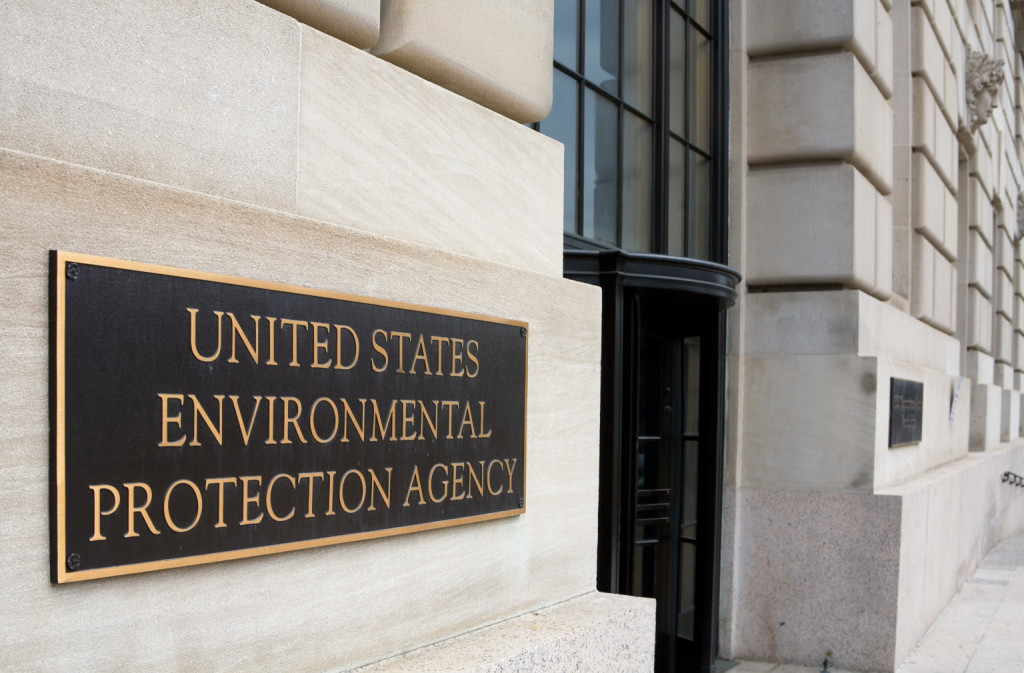
The Republican-led U.S. Senate voted to repeal the Obama administration’s Clean Power Plan Tuesday evening. The resolution S.J.Res. 24, was approved by a 52-46 vote in the upper chamber of Congress. Discontent with the carbon-reduction plan had been simmering among conservatives in both the House and Senate, with business and industry groups as well as some unions saying the plan will hurt many local economies and increase energy rates. Ahead of the vote, the Senate Republican Policy Committee issued a statement saying the plan was a non-starter for the newly-emboldened caucus. “After seven years of review that yielded five favorable environmental reports, the administration rejected the Keystone XL pipeline – and all of its economic, energy security, and environmental benefits – for no reason other than to send a message to other countries that President Obama is a global “leader” on climate change,” read the report. “The CO2 rules for new and existing power plants are no different. Their most immediate purpose is to serve as a message that President Obama can tout as he seeks to win the approval of his international peers as a global “leader” on climate issues,” the GOP senators’ caucus stated. State officials, including Attorney General Luther Strange, have offered persistent resistance to the plan. Strange called the plan unacceptable, and said the administration’s efforts to support them amount to “propaganda.” “The Environmental Protection Agency’s new Clean Power Plan continues the Obama administration’s theme of ignoring the legal limits on its executive authority in order to satisfy a political agenda that places the lowest priority on the rights of coal industry workers and American consumers,” said Strange, who joined a national push to delay or cancel implementation of the CPP earlier this year. “Under the EPA rule, Alabamians’ average annual household energy bills could rise by more than $800 a year by the time the plan is fully implemented. This places an undue burden on those who can least afford it, including the poor, the elderly and others on fixed incomes. What’s more, it punishes as many as 16,000 Alabamians whose jobs are dependent upon the coal industry,” said Strange. A total of 27 states have filed lawsuits against the rule governing existing power plants, including Alabama under Strange. Both of Alabama’s senators, Jeff Sessions and Richard Shelby have castigated the administration over the plan, saying it would kill coal-based jobs in Alabama and around the region, as have U.S. Rep. Gary Palmer and Mike Rogers. President Barack Obama has said he will veto any measure akin to the one passed by today’s vote. The status of a possible override remains uncertain. State utilities and the Alabama Public Service Commission have passed voluntary plans to help reach emissions standards, but call the EPA’s plan an example of executive branch overreach. See below for an image created by the Republican Senate Policy Committee on what they claim are likely rate changes should the Clean Power Plan be enacted.
Vote to repeal Clean Power Plan likely coming Tuesday

The GOP-led U.S. Senate will reportedly vote to repeal the Obama administration’s Clean Power Plan in the coming days, perhaps as early as Tuesday evening. Discontent with the carbon-reduction plan has been simmering among conservatives in both the House and Senate, with business and industry groups as well as some unions saying the plan will hurt many local economies and increase energy rates. The Senate’s Republican Policy Committee has issued a statement saying that when it comes to waiting for the Obama administration to change its tune — following his recent rejection of the Keystone XL pipeline — enough is enough. “After seven years of review that yielded five favorable environmental reports, the administration rejected the Keystone XL pipeline – and all of its economic, energy security, and environmental benefits – for no reason other than to send a message to other countries that President Obama is a global “leader” on climate change. “The CO2 rules for new and existing power plants are no different. Their most immediate purpose is to serve as a message that President Obama can tout as he seeks to win the approval of his international peers as a global “leader” on climate issues.” A total of 27 states have filed lawsuits against the rule governing existing power plants, including Alabama. President Barack Obama has said he would veto such a measure. A veto override endeavor is unlikely, but the political fight over coal in Washington is likely to be fierce regardless. See below for an image created by the Republican Senate Policy Committee on likely rate changes should the Clean Power Plan be enacted.
Daniel Sutter: The U.S. hurricane drought
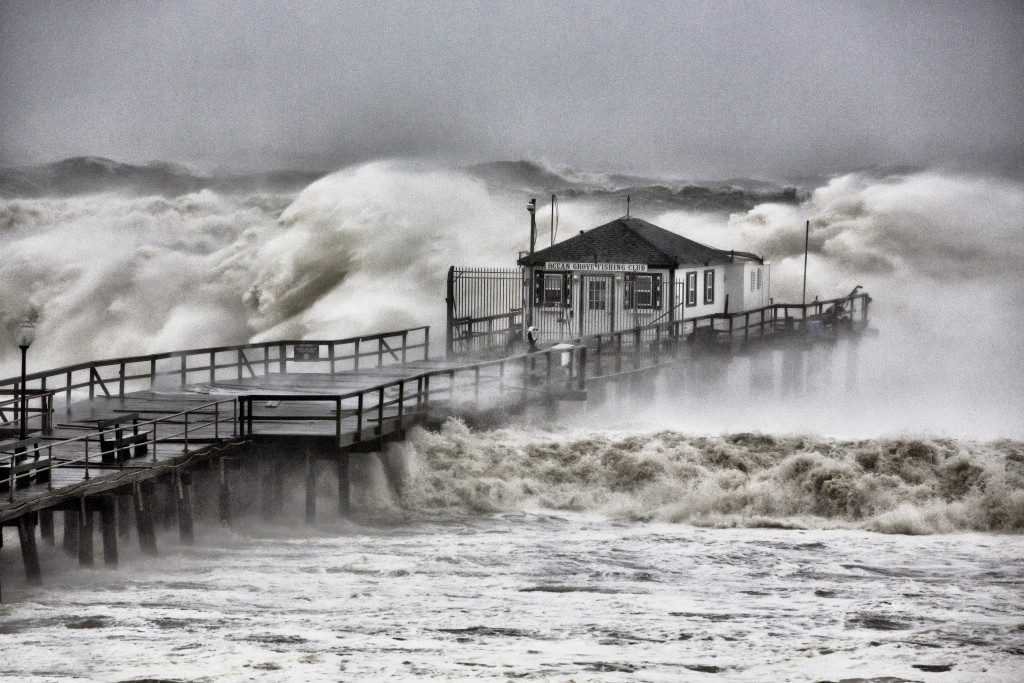
Last weekend marked ten years since Hurricane Wilma struck Florida as a Category 3 storm on the Saffir-Simpson hurricane intensity scale. Wilma was the last major hurricane (categories 3, 4 and 5) to strike the U.S. Ten years is the longest span between major hurricane landfalls since 1851, exceeding the longest prior drought (1860-1869) by over a year. The hurricane future appeared very different ten years ago. Global warming was allegedly making hurricanes more frequent and devastating, and hurricanes were going to get worse. The busy 2004 and 2005 seasons certainly made hurricanes seem more frequent. The 2005 Atlantic season featured 28 named storms (we ran through our alphabet and had to use Greek letters as names) and 15 hurricanes, both records. Katrina devastated New Orleans and the Mississippi coast that year. Seven major and thirteen total hurricanes struck the U.S. in 2004-05. Hurricanes also seemed more devastating than ever. Katrina caused $100 billion in damage (adjusted for inflation) and the highest U.S. death toll since 1928. At the end of 2005, 6 of the 8 costliest hurricanes on record had occurred in the previous two years. This part of the tale, however, was misleading. Economists know to adjust historical dollar figures for inflation. But adjusting for inflation does not make damage from past and present hurricanes fully comparable. Increases in population and wealth mean that hurricanes have a lot more property to destroy now. Damage normalizations assuming that damage will increase proportionally with population and wealth per person provide more accurate comparisons. Normalizations provide an educated guess about the damage we could expect if past hurricanes occurred today. Normalization dramatically increases the damage measured in past hurricanes. Consider the “Great Miami Hurricane” of 1926. Miami Beach has grown from a population of 644 in 1920 to 90,000 today, and is home to some very expensive real estate. Normalized damage from the Great Miami Hurricane exceeds $200 billion, or more than double Katrina’s total. Once normalized, hurricane damage has not been increasing over time. Increases in population and property at risk, what researchers call societal vulnerability, explain rising damages. Societal vulnerability has increased significantly. The population of Atlantic and Gulf coast counties, for example, has increased from under 6 million in 1900 to almost 38 million in 2010. The value of insured property at risk from hurricanes now exceeds $10 trillion. Societal vulnerability is not necessarily bad. The U.S. population has more than quadrupled since 1900, and people must live somewhere. Areas safe from hurricanes can face tornado, earthquake, or tsunami risk. Furthermore, Americans value living and vacationing near the ocean, while many industries must locate near the coast. We can now afford what previously would have been catastrophic losses. Coastal development is worthwhile as long as the value created exceeds the potential hurricane damage. The extra costs will be reflected in prices of rental or vacation properties, or goods like gasoline or chemicals. Several government policies, however, subsidize hurricane losses and thus encourage development when the value created does not exceed the extra costs. The two most prominent policies are state homeowners insurance regulation and the National Flood Insurance Program. Both of these policies push some of the costs of insurance against hurricanes on to other Americans. Does the U.S. hurricane drought prove that global warming is not occurring? Not necessarily. This past decade has witnessed some active Atlantic hurricane seasons, and Mexico has been hit be two Category 5 hurricanes, including Patricia this past weekend. The drought might just be luck. And yet the hurricane drought, combined with the more than decade-long warming pause in satellite-measured temperature records, like the one maintained at the University of Alabama-Huntsville, should make us rethink global warming policy. The Clean Power Plan, for instance, will cost us hundreds of billions of dollars, and yield few benefits if warming is not as bad as climate models forecast. On the other hand, the U.S. will be hit by major hurricanes in the future regardless of whether the climate warms. Eliminating inefficient government policies will reduce the cost of hurricanes, and the damage avoided will escalate if global warming strengthens future hurricanes. Daniel Sutter is the Charles G. Koch Professor of Economics with the Manuel H. Johnson Center for Political Economy at Troy University and host of Econversations on TrojanVision.
Alabama, states reliant on fossil fuels sue over new clean air rules

States and industry groups dependent on fossil fuels filed court challenges Friday to President Barack Obama‘s Clean Power Plan, which aims to reduce greenhouse gas emissions. Opponents of the plan filed a flurry of lawsuits at the U.S. Court of Appeals as the Environmental Protection Agency published its final version of the new regulations. The challenges from all but two of the 25 states were filed by Republicans. They deride the plan as an “unlawful power grab by Washington bureaucrats” that will kill coal mining jobs and drive up electricity costs. “The Clean Power Plan is one of the most far-reaching energy regulations in this nation’s history,” said West Virginia Attorney General Patrick Morrisey, among those leading the challenges. “I have a responsibility to protect the lives of millions of working families, the elderly and the poor, from such illegal and unconscionable federal government actions.” The Obama administration and environmental groups counter that the rules are needed to cut carbon emissions while curbing the worst impacts of climate change and sea-level rise. They also say the plan will spur new clean-energy jobs. The new rules require states to cut carbon emissions by 30 percent by 2030. Each state has a customized target and is responsible for drawing up an effective plan to meet its goal. “We are confident we will again prevail against these challenges and will be able to work with states to successfully implement these first-ever national standards to limit carbon pollution, the largest source of carbon emissions in the United States,” said EPA Administrator Gina McCarthy. The EPA says it has authority to enact the plan under the Clean Air Act. At issue are dueling provisions added to the law by the House and Senate in 1990. The EPA’s interpretation relies on the Senate language, but opponents argue that the House version should win out. EPA already regulates other power-plant pollutants under a different section of the Clean Air Act, and the opponents claim the law prohibits “double regulation.” Under the act, certain challenges to agency rules skip the federal district court and go directly to the appeals court in Washington, D.C. Morrisey also filed a stay barring the plan from taking effect while the court challenges proceed, a question that will likely be up to the Supreme Court. “We expect polluters and their allies to throw everything they’ve got at the Clean Power Plan, and we expect them to fail,” said Sierra Club Executive Director Michael Brune, among those defending the law. “The Clean Power Plan is based on a law passed by Congress, upheld by the Supreme Court, and demanded by the American people.” The states challenging the plan in court are Alabama, Arkansas, Arizona, Colorado, Florida, Georgia, Indiana, Kansas, Kentucky, Louisiana, Michigan, Missouri, Montana, Nebraska, New Jersey, North Carolina, Ohio, Oklahoma, South Carolina, South Dakota, Texas, Utah, West Virginia, Wyoming and Wisconsin. Also filing suit against the EPA on Friday was Murray Energy Corp., the nation’s largest privately owned coal company. Members of Congress from coal-mining states joined in, saying they will introduce new legislation aimed at blocking the EPA from enforcing the plan. On the other side, 15 states and the District of Columbia say they are backing the Obama administration and will begin working to comply with the new rules. There is some political variation in the positions taken within the states. In North Carolina, for example, the environmental agency controlled by the Republican governor joined the opposition without the participation of the state’s Democratic attorney general. Governors in Colorado and Michigan said they will work to comply with the new EPA rules, even as attorneys general from their states joined the lawsuit. “Clean air and protecting public health should be everyone’s top priority,” Colorado Gov. John Hickenlooper, a Democrat, said Friday. “We believe that Colorado can achieve the clean air goals set by the EPA, at little or no increased cost to our residents.” Republished with permission of the Associated Press.
GOP-led Congress moves to block Barack Obama’s Clean Power Plan

Congressional Republicans are moving to block President Barack Obama‘s plan to force steep cuts in greenhouse gas emissions from U.S. power plants. Senate Majority Leader Mitch McConnell and Rep. Ed Whitfield say they will file resolutions early this week opposing Obama’s plan to impose new regulations on new and existing coal-fired plants. The two Kentucky Republicans were expected to file the challenges filed under the little-used Congressional Review Act, which allows Congress to block executive actions with simply majority votes. The maneuver is subject to a presidential veto and has rarely been successful in overturning executive branch rules. Still, it allows opponents to set up votes calculated to embarrass the Obama administration ahead of international climate talks in Paris this fall. Republican senators are expected to tout the congressional challenge in a series of floor speeches starting Tuesday. One notable exception is New Hampshire Sen. Kelly Ayotte, who became the first GOP senator to support Obama’s sweeping regulation that mandates carbon emissions cuts from the nation’s power plants. Ayotte, who is locked in a difficult re-election fight, said Sunday that the Clean Power Plan would “address climate change through clean-energy solutions that will protect our environment.” New Hampshire is already well on its way to meet the plans’ goals, Ayotte said, adding that she would monitor the plan to ensure it does not have an adverse impact on state energy costs. McConnell said in a statement that the regulations being imposed under the Clean Power Plan “make it clearer than ever that the president and his administration have gone too far – and that Congress should act to stop this regulatory assault.” The administration’s “crusade for ideological purity” threatens the livelihoods of coal miners and their families in Kentucky and other states, McConnell said. “These are Kentuckians who just want to work, provide for their families and deliver the type of low-cost energy that attracts more jobs to Kentucky. And coal is what allows so many of them do all that,” he said. The congressional resolutions follow court challenges filed Friday by industry groups and states dependent on fossil fuels. The challenges from all but two of the 25 states were filed by Republicans. They deride the plan as an “unlawful power grab by Washington bureaucrats” that will kill coal mining jobs and drive up electricity costs. The Obama administration and environmental groups counter that the rules are needed to cut carbon emissions while curbing the worst impacts of climate change and sea-level rise. They also say the plan will spur new clean-energy jobs. The new rules require states to cut carbon emissions by 32 percent by 2030, based on emissions in 2005. Each state has a customized target and is responsible for drawing up an effective plan to meet its goal. The EPA says it has authority to enact the plan under the Clean Air Act. Republished with permission of The Associated Press.
GCEF keynoter: America’s future will be forged by steel, not government
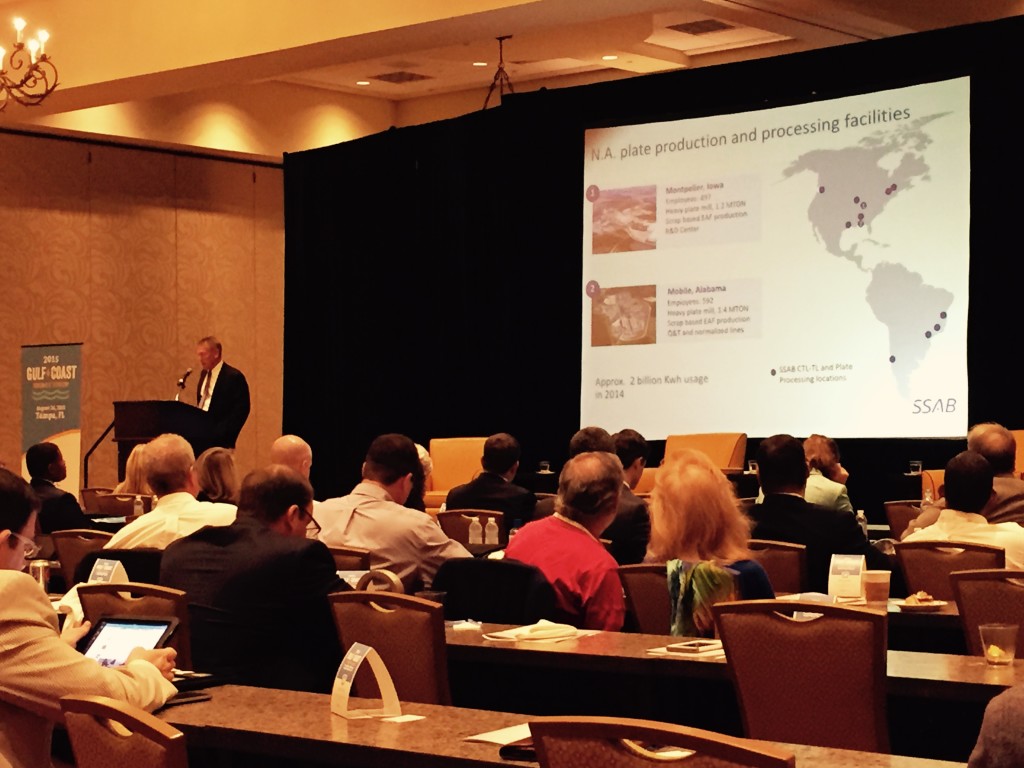
The Gulf Coast Energy Forum’s keynote speaker Chuck Schmitt hit a familiar note within the energy industry as attendees finished lunch: the sector is a well-oiled machine calibrated for innovation, and government rules and regulations are drags not only on oil and gas production, but on the nation’s economy as a whole. Schmitt – president of the American branch of Nordic steel producers SSAB and chairman of the American Iron & Steel Institute – told a crowd of around 50 industry interests that federal regulations designed to protect the environment are misguided, if well-intentioned. (“Wishes and good intentions don’t keep the lights on,” quipped Consumer Energy Alliance rep Brydon Ross following the keynote.) Among “the brilliant ideas that come down from Washington” in Schmitt’s parlance is the EPA’s Clean Power Plan, a bugaboo decried by almost every speaker at energy industry conference. “The rules, in my view, give foreign manufacturers a competitive advantage by increasing U.S. electricity costs,” said Schmitt. “We’re concerned with the EPA’s proposed ozone standard could shut down facilities and force manufacturers like ours to cancel expansion plans.” “Even the EPA itself said that its ozone regulation alone could be the most expensive regulation in American history.” Forcing industry to comply with byzantine federal laws, said Schmitt, interferes with the self-interested sustainability practices that occur naturally in an industry that aims to be at the center of American life for generations and is not inherently short-sighted as regulators presume. Steel – the most recycled material in the world – is especially sustainable because it is 98 percent recyclable, Schmitt said. Instead of tweaking domestic energy producers, the government ought to focus on staying competitive with growing emerging markets. “Congress and the [Obama] administration should craft a national energy policy that promotes the development of all domestic energy sources,” said Schmitt. “One of the consequences of international energy competition is includes the net environmental impact that results when advanced domestic industries like ours are displaced by less efficient, less responsible plants.” Schmitt concluded by highlighting his interest group’s ongoing advocacy efforts. “During the most recent congressional district work period, AISI activated our grassroots networks,” Schmitt said, referring to the recess which began this month. “Steelworkers across the country asked their members of Congress to oppose EPA’s plans to unilaterally regulate greenhouse gas emissions for existing and new power plants.” Schmitt was hopeful Congress would listen, and the crowd listening to him in turn gave a collective nod.


